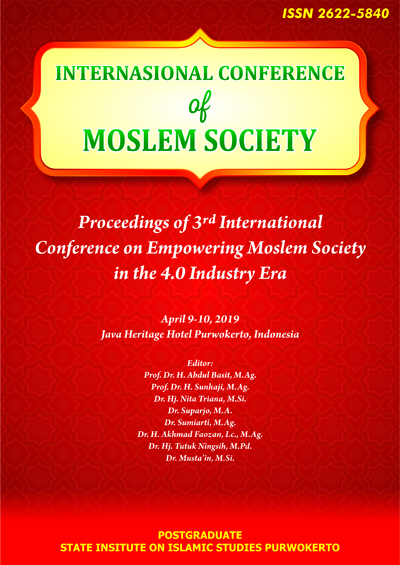Innovation of Educational Institutions in the Millennial Era
DOI:
https://doi.org/10.24090/icms.2019.2343Keywords:
innovation, educational institutions, millennialAbstract
The rapid development of the times now brings us to positive and negative developments in the lives of all people including in education management. educational institutions besides being able to present innovation while ensuring the quality of their students are not left behind by the times. The term millennial that is inherent in this era is inseparable from technological advances that are so fast that it needs good management that does not seem old-fashioned and lagging so as to foster a high interest in learning among students while achieving the vision and mission of the institution. Innovations in educational institutions include curriculum innovation, technological innovation, learning innovation, and learning media innovation so that educational institutions and educational devices can compete to achieve the best goals and results for the Indonesian people.Downloads
Download data is not yet available.
References
Asrohah, Hanun. (2004) Pelembagaan Pesantren Asal-Usul Perkembangan Pesantren di Jawa. Jakarta: Departemen Agama RI,.
Malisi, M. A. (2017). Modernization of Islamic Education in South Kalimantan (Socio-historical Perspective of Normal Islam Amuntai). IjtimÄ’iyya: Journal of Muslim Society Research, 2(1), 43-66. https://doi.org/https://doi.org/10.24090/ijtimaiyya.v2i1.1051
Muhammad Sirozi, Agenda Strategi Pendidikan Islam (Yogyakarta: AK Group
2004), hal. 130-132.
Qomar, M. (2007). Manajemen Pendidikan Islam. Malang: Erlangga.
Rogers, Everett M. (1983). Diffusion of Innovation. Canada: The Free Press, A Division of Macmillan Publishing Co., Inc. New York.
Sumiarti, S. (2017). Islamic Education Based on Agroforestry in MTs Pakis Gununglurah Cilongok Banyumas. IjtimÄ’iyya: Journal of Muslim Society Research, 2(2), 239-258. https://doi.org/https://doi.org/10.24090/ijtimaiyya.v2i2.1639
Wojowasito, S. 1972. Kamus Bahasa Indonesia. Bandung: Shinta Dharma Bandung.
Malisi, M. A. (2017). Modernization of Islamic Education in South Kalimantan (Socio-historical Perspective of Normal Islam Amuntai). IjtimÄ’iyya: Journal of Muslim Society Research, 2(1), 43-66. https://doi.org/https://doi.org/10.24090/ijtimaiyya.v2i1.1051
Muhammad Sirozi, Agenda Strategi Pendidikan Islam (Yogyakarta: AK Group
2004), hal. 130-132.
Qomar, M. (2007). Manajemen Pendidikan Islam. Malang: Erlangga.
Rogers, Everett M. (1983). Diffusion of Innovation. Canada: The Free Press, A Division of Macmillan Publishing Co., Inc. New York.
Sumiarti, S. (2017). Islamic Education Based on Agroforestry in MTs Pakis Gununglurah Cilongok Banyumas. IjtimÄ’iyya: Journal of Muslim Society Research, 2(2), 239-258. https://doi.org/https://doi.org/10.24090/ijtimaiyya.v2i2.1639
Wojowasito, S. 1972. Kamus Bahasa Indonesia. Bandung: Shinta Dharma Bandung.
Downloads
Published
2019-04-12
How to Cite
Iman Haqiqi, Z. A. (2019). Innovation of Educational Institutions in the Millennial Era. International Conference of Moslem Society, 3, 361–369. https://doi.org/10.24090/icms.2019.2343
Issue
Section
ICMS 2019
License
Authors who publish with this journal agree to the following terms:
- Authors retain copyright and grant the journal right of first publication with the work simultaneously licensed under a Creative Commons Attribution-ShareAlike 4.0 License that allows others to share the work with an acknowledgement of the work's authorship and initial publication in this journal.
- Authors are able to enter into separate, additional contractual arrangements for the non-exclusive distribution of the journal's published version of the work (e.g., post it to an institutional repository or publish it in a book), with an acknowledgement of its initial publication in this journal.
- Authors are permitted and encouraged to post their work online (e.g., in institutional repositories or on their website) prior to and during the submission process, as it can lead to productive exchanges, as well as earlier and greater citation of published work (See The Effect of Open Access).


